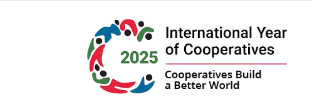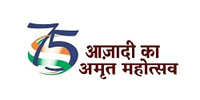About the Department
The Ministry of Fisheries, Animal Husbandry & Dairying consists of two departments: the Department of Fisheries and the Department of Animal Husbandry & Dairying. The Department of Fisheries was established from the former Department of Animal Husbandry, Dairying & Fisheries, as per the Cabinet Secretariat's Notification No.1/21/21/2018-Cab dated February 5, 2019.
The Department is under the charge of Shri Rajiv Ranjan Singh Alias Lalan Singh, Hon’ble Minister for Fisheries, Animal Husbandry & Dairying and Panchayat Raj. He is assisted by two Ministers of State Prof. S.P. Singh Baghel, Union Minister of State in the Ministry of Fisheries, Animal Husbandry and Dairying and Panchayat Raj and Shri George Kurian, Union Minister of State in the Ministry of Fisheries, Animal Husbandry and Dairying and Minority Affairs. The administrative head of the Department is the Secretary, Fisheries. Secretary (Fisheries) is assisted by two Joint Secretaries with Inland and Marine Fisheries divisions.
The fisheries sector plays a pivotal role in India’s economy, contributing significantly to national income, exports, food and nutritional security, and employment generation. Recognized as a ‘Sunrise Sector,’ it supports the livelihoods of nearly 30 million people, particularly from marginalized and vulnerable communities. Over the past decade, the Government of India has undertaken numerous strategic interventions to enhance fisheries production and productivity. As a result, total fish production (both inland and marine) has surged from 95.79 lakh tonnes in 2013-14 to 184.02 lakh tonnes in 2023-24, marking a remarkable transformation. Notably, inland fisheries and aquaculture production witnessed an impressive 114% growth, rising from 61.36 lakh tonnes in 2013-14 to 139.07 lakh tonnes in 2023-24.
India’s seafood exports have also experienced a substantial boost, doubling from ₹30,213 crore in 2013-14 to ₹60,523.89 crore in 2023-24, reinforcing the country’s position as a global seafood export
India’s seafood exports have also experienced a substantial boost, doubling from ₹30,213 crore in 2013-14 to ₹60,523.89 crore in 2023-24, reinforcing the country’s position as a global seafood export
Functions of the Department
The Department is responsible for matters relating to formulation of policies and schemes pertaining to development of Inland, Marine and Coastal Fisheries and Fishery Institutes including its four subordinate institutions and one autonomous body and one regularly authority. The Department advises the State Governments /Union Territories (UTs) in formulation of policies and programmes in the field of fisheries.
Subordinate offices /Fishery Institutions functioning under the Department.
The Department of Fisheries (DoF) has four institutions / sub-ordinate offices under its fold. These institutions are Fishery Survey of India (FSI), Mumbai , Central Institute for Fisheries Nautical and Engineering Training (CIFNET), Kochi, National Institute for Fisheries Post-Harvest Technology & Training (NIFPHATT), Kochi, and Central Institute of Coastal Engineering for Fisheries (CICEF), Bengaluru. Besides these four Institutes, DoF also has two autonomous/ regulatory bodies the National Fisheries Development Board (NFDB), Hyderabad and the Coastal Aquaculture Authority (CAA), Chennai.
Transformational Schemes & Initiatives
To harness the full potential of the fisheries sector, the Government of India has launched several flagship schemes. The Blue Revolution Scheme (2015-16 to 2019-20), with an investment of ₹5,000 crore, laid the foundation for integrated fisheries development. Following this, Pradhan Mantri Matsya Sampada Yojana (PMMSY) was launched in 2020-21, with an estimated outlay of ₹20,050 crore. This flagship scheme has sanctioned projects worth ₹20,864.29 crore, focusing on key areas such as fishing harbours, fish landing centers, aquaculture expansion, post-harvest infrastructure, seaweed farming, ornamental fisheries, and fisher welfare programs.In 2024, the Pradhan Mantri Matsya Kisan Samridhi Sah-Yojana (PMMKSSY) was introduced with ₹6,000 crore to formalize the fisheries sector, promote aquaculture insurance, and enhance value-chain efficiencies. Additionally, the Fisheries & Aquaculture Infrastructure Development Fund (FIDF), launched in 2018-19 with ₹7,522.48 crore, has already sanctioned 132 projects worth ₹5,794.09 crore, strengthening essential infrastructure such as fishing harbours, processing plants, cold storage, and fish seed farms. These initiatives together are shaping the future of India’s fisheries sector, contributing to its growth and sustainability.
Cluster Development & Seaweed Farming
The Department of Fisheries has envisaged a strategic focus on cluster development across key areas, including Pearl, Seaweed, Ornamental Fisheries,Reservoir Fisheries, Fishing Harbours, Saline Water Aquaculture, Cold Water Fisheries, Sea Cage Culture, Freshwater and Brackish-Water Fisheries, Deep Sea and Oceanic Fisheries, Organic Fisheries, Wetland Fisheries, Island Fisheries and other areas tailored to specific sectoral and regional needs. To advance this vision, the Department of Fisheries has already identified priority for development Hazaribagh Pearl Cluster in Jharkhand,Madurai Ornamental fisheries Cluster,Tamil Nadu,Lakshadweep Seaweed Cluster, Andaman & Nicobar Islands Tuna Cluster, Soreng Organic fisheries Cluster,Sikkim.
Recognizing the immense potential of seaweed farming as a sustainable and high-value aquaculture practice, the Department has also established a Centre of Excellence for Seaweed Farming and Research at ICAR-CMFRI, Mandapam. This initiative is expected to benefit approximately 20,000 farmers while creating around 5,000 employment opportunities. Additionally, the establishment of Nucleus Breeding Centres (NBCs) marks a significant step toward enhancing seed quality, advancing genetic improvement of candidate species, and ensuring sustainable broodstock management for both marine and inland fish species.. These efforts collectively contribute to strengthening India’s aquaculture sector through scientific innovations and improved production practices.
Strengthening Fisheries Cooperatives & Digital Integration
Empowerment of fisheries cooperatives and creation of Fish.Farmer Producer Organizations (FFPOs) are vital aspects of the Department's strategy for inclusive and equitable development of the sector. To date, 2,195 FFPOs have been established, with 63 of them already onboarded onto digital platforms in collaboration with ONDC. This allows farmers greater access to markets and fair pricing, while also providing an avenue for improved visibility and marketing of their products. The Department has also focused on enhancing entrepreneurship in the sector, providing financial assistance of up to ₹1.3 crore to fisheries startups and FFPOs. These incubatees are expected to boost innovation in aquaculture, seafood processing, and value addition. So far, over 100 fisheries startups have benefited from this initiative.
Policy Enhancements and Digital transformation
Regulatory reforms have played an essential role in transforming the sector. In 2023, the Coastal Aquaculture Authority Act was amended to simplify regulations and encourage new aquaculture activities such as cage culture and seaweed farming. The government has also launched a ₹364 crore project to equip 1 lakh fishing vessels with transponders for real-time monitoring, improving both safety of the fishers and resource management in the fishing industry. The introduction of the National Fisheries Development Program (NFDP) Portal has further streamlined processes for the registration and operation of fisheries projects. Furthermore, the integration of Kisan Credit Card (KCC) Fisheries into the Jan Samarth Portal has made financial access easier for fishers and fish farmers, facilitating quicker and more efficient loans and financial services.
Innovation & Climate Resilience
In line with modernizing the sector, the Department has leveraged technological innovations, including the application of drone technology in fisheries sector. A pilot project with an outlay of ₹1.16 crore demonstrated the successful use of drones in aquaculture, especially for seed stocking, water quality monitoring, and resource management etc. The Department has also introduced the "Rangeen Machhli" mobile app., designed to promote ornamental fisheries by providing real-time market data, training materials, and access to global markets.
Enhancing the resilience of India’s fisheries sector to climate change is a key priority for the government. To address the unique developmental needs and boost fisheries-based economic activities in coastal areas vulnerable to climate impacts, the Department of Fisheries is developing Climate Resilient Coastal Fishermen Villages (CRCFV) under the Pradhan Mantri Matsya Sampada Yojana (PMMSY). A total of 100 villages across coastal states/UTs have been identified, and need based infrastructure and livelihood support facilities are being developed through an investment of Rs. 200 crores.
Entrepreneurship & Fisheries Startups
A strong and vibrant ecosystem for fisheries entrepreneurship is being actively cultivated in India through the establishment of dedicated Fisheries Incubation Centers at key institutions. These centers, located at MANAGE-Hyderabad, ICAR-CIFE Mumbai, and ICAR-CIFT Kochi, are at the forefront of supporting innovation and growth within the fisheries sector. They play a crucial role in fostering the development of fisheries startups and Fish Farmer Producer Organizations (FFPOs) by providing comprehensive support.The aim is to create a sustainable and scalable ecosystem that empowers entrepreneurs to address key challenges and harness the opportunities within the fisheries industry. To date, 39 fisheries startups engaged in diverse areas such as aquaculture innovation, seafood processing, and value addition have already benefited from these initiatives. By providing a conducive environment for innovation, these incubation centers are not only helping startups thrive but also contributing to the overall development of the fisheries value chain, driving economic growth, employment, and sustainability in the sector.
Through a combination of policy initiatives, strategic investments, technological advancements, and regulatory reforms, the Government of India is taking significant strides to unlock the full potential of the fisheries sector. The continued growth and sustainability of this vital sector will ensure that India remains a key player in the global fisheries scenario, while contributing to the national economy, food security, and the creation of millions of jobs for rural and coastal communities.






















